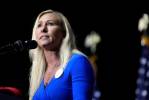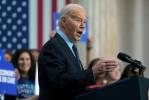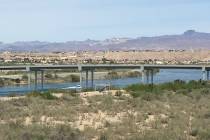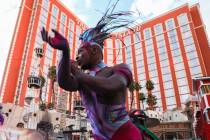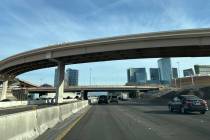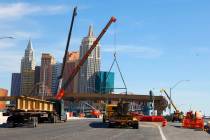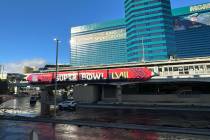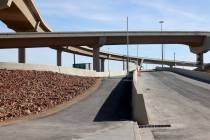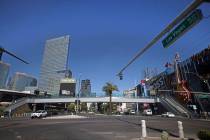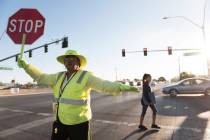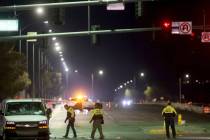Some say Click it or Ticket goes far enough
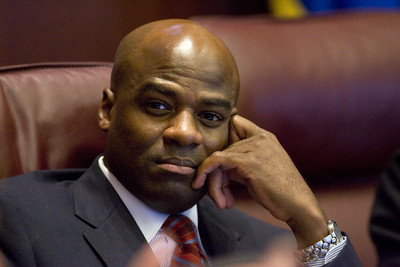
In our society, there may be no greater example of government intrusion into the lives of citizens than transportation.
To drive a vehicle, we need government approved driver’s licenses.
We can’t drive our vehicles unless we buy fuel, and we can’t buy fuel without paying taxes.
We drive, for the most part, on government-built roadways.
And once on the road we are told through government regulation when to stop, when to go and how fast to drive.
We can’t drive a vehicle if it’s not registered with the government or if we’ve had what the government says is too much to drink.
If your vehicle is a motorcycle, the government says you have to wear a helmet when driving it.
The government has instituted these rules to maintain a certain level of order and safety on the roadways. And we must follow these rules or the government will fine us or take away our driving privileges.
We as citizens have approved these regulations, because we elect our government.
On Thursday, the state Legislature will look at a transportation issue that some say is a needed safety measure that will save lives, while others believe it is government intrusion gone too far.
Senate Bill 116 would give law enforcement the authority to pull over motorists after observing them not wearing a seat belt. The offense would come with a $25 fine.
Not wearing a seat belt now is a secondary offense in Nevada, meaning motorists can be cited for not wearing one only if they are pulled over for another offense.
Last week, this column looked at those who support SB116.
Today’s column will focus on those who have concerns over the effectiveness and fairness of changing Nevada’s seat belt law.
Assemblyman Kelvin Atkinson, D-North Las Vegas, has been at the forefront of the primary seat belt debate.
As chairman of the Assembly Transportation Committee, he has the power to allow or deny a vote by the committee. If there is no vote, the bill dies.
In 2007, Atkinson would not allow the committee to vote on the primary seat belt bill and it was killed.
Atkinson has several concerns regarding the proposal.
He fears that if the primary seat belt law is passed, law enforcement agencies would end up using it as an excuse for racial profiling.
And he’s not alone in that belief.
Gary Peck, executive director of the American Civil Liberties Union of Nevada, is a staunch opponent of the primary seat belt law.
“We oppose it because it creates more of a possibility for police to abuse their discretion. Experience tells us it creates more potential for racial profiling,” Peck said. “We are not suggesting officers are intentionally racist. The vast majority are not. But this is where all of the subconscious biases and prejudices come into play.”
Peck points to a recent study by the state attorney general regarding vehicular stops by police.
He said the study showed that, after being stopped by police, people of color were more likely to be asked to get out of their vehicle, get cuffed and have their vehicle searched than white people pulled over for the same reasons.
He said there’s no explanation other than inherent bias, whether it is perceived or subconscious.
Peck said the government could enact a number of laws to protect people, such as the primary seat belt law. But the cost to citizens’ personal freedom is “too great,” he said.
Peck also said profiling concerns outweigh the safety issue, because “there’s no hard and fast evidence that it (a primary seat belt law) would save lives.”
Traffic safety advocates will argue that most states that have primary seat belt laws have a lower death rate for people who are unrestrained during crashes. But it’s not an overwhelming majority. Only 15 of the 26 states have a lower rate.
Some states with a primary seat belt law have a high percentage of unrestrained fatalities, including New Mexico with a 58 percent unrestrained fatality rate in 2007, according to a study by the National Highway Traffic Safety Administration.
Also, Atkinson points to studies, annually conducted by the Nevada Department of Public Safety, that indicate over the past several years more than 90 percent of Nevada drivers observed between 9 a.m. and 4 p.m. wear a seat belt.
Atkinson doesn’t believe enacting a primary seat belt law would change the minds of the 10 percent who don’t wear one already.
The reason is that most Nevadans don’t think of the illegality of not wearing a seat belt in terms of secondary and primary offenses, Atkinson said.
“They think it already is against the law. And it is,” he said.
Atkinson believes education, not prosecution, would work better to change the habits of those not wearing seat belts.
Proponents of the primary seat belt law know they have an uphill battle.
A 2007 Annual Performance Report by the Nevada Department of Public Safety stated, “It will be difficult for supporters to convince legislators to pass a primary law, when the usage is already high, and theoretically can’t go much higher. The focus in Nevada’s 2009 legislative session for a primary belt law will be the populations disproportionately not buckling up in their cars: young male, night-time, and impaired drivers.”
But this uphill battle is, in large part, because of the success of Nevada’s Click it or Ticket campaign and public advertising and education efforts.
In 2002, the observed state seat belt usage rate was 74.5 percent. It peaked in 2005 at 94.8 percent. And it has remained above 90 percent ever since.
Those numbers translate in terms of fatalities. The number of unrestrained fatalities on Nevada’s roadways dropped from 61 percent in 2002 to just below 50 percent in 2004, and it has hovered there ever since.
Meanwhile, when I asked Atkinson whether SB116 would get a vote in the Transportation Committee this session, he was noncommittal.
Pointing to the lagging economy and state budget woes, Atkinson said, “Do I think it’s the most important bill? No, I don’t.”
For folks who have followed this column since I took over, you know I am a staunch advocate for a primary seat belt law.
Forget the millions of dollars that could be saved by reducing critical injury and fatal vehicular crashes.
I believe seat belts save lives. It saved mine several years ago.
And if this law would encourage even one more person to wear one, it would be a victory.
While I respect the argument that a primary seat belt law would be an intrusion on personal freedom, it’s not exactly the government trying to put a camera in my living room.
Besides, we all can have our day in court.
Whether you are for or against this law, I would encourage you to call or e-mail your state legislator and let him or her know where you stand.
After all, it’s still our government.
If you have a question, tip or tirade, call the Road Warrior at 702-387-2904, or e-mail him at roadwarrior@reviewjournal.com. Please include your phone number.
The westbound Lake Mead Boulevard onramp to southbound U.S. Highway 95 will be closed from 9 p.m. today to 5 a.m. Monday for installation of the Freeway and Arterial System of Transportation, the Transportation Department announced. Motorists should use alternate ramps at Cheyenne Avenue or Rainbow Boulevard to access the freeway.Work will begin Feb. 23 on a $2.8 million flood-control project on Decatur Boulevard, from Elkhorn Road to Whispering Sands Drive, the Las Vegas Public Works Department announced. The project will take about four months to complete. Temporary lane restrictions will begin at the intersection of Decatur and Elkhorn and will proceed north on Decatur to Whispering Sands. Construction work will take place during daytime hours. Motorists could use Bradley Road as an alternate route for north-south travel.
Eastbound Twain Avenue is closed under Interstate 15 through May, the Nevada Department of Transportation announced. The closure is part of the ongoing I-15 express lane project, which will see the interstate widened from eight to 10 lanes from Sahara Avenue to the Las Vegas Beltway. Motorists should watch for posted detours.





